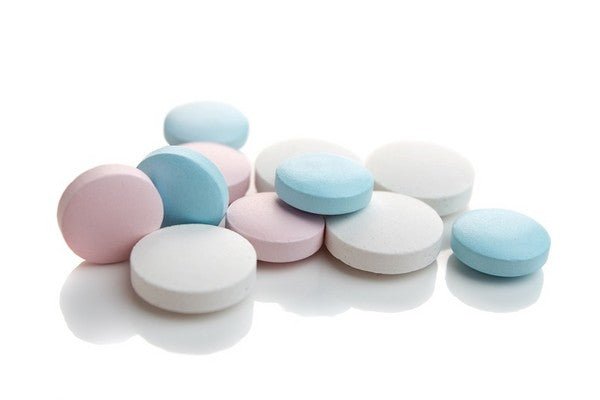
The Global Pharmaceutical Industry and the Role of Generic Drugs
Share
The Global Pharmaceutical Industry and the Role of Generic Drugs
In the global pharmaceutical industry, multinational companies have long served as the driving force behind innovation. These corporations possess vast financial resources, sophisticated R&D systems, and global clinical trial networks, enabling them to transform scientific discoveries into life-saving medicines. From antibiotics and vaccines to targeted cancer therapies, many breakthroughs that have reshaped modern medicine stem from the sustained efforts of these pharmaceutical giants.
However, innovation in this field comes at an enormous cost. Developing a new drug typically requires more than ten years of research and billions of dollars in investment. To reward innovation and recoup development expenses, companies enjoy market exclusivity and high returns during the patent protection period. Yet once the patent expires, the landscape changes dramatically.
When generic drugs enter the market, they are sold at a fraction of the price of the original brand-name drugs, rapidly seizing market share. Since generics contain the same active ingredients and dosage as their branded counterparts, they deliver comparable therapeutic effects. This makes them critical tools for reducing healthcare costs and expanding patient access. As a result, most governments actively promote the use of generics once patents expire, introducing price competition to help maintain the sustainability of public healthcare systems.
Nevertheless, a persistent “brand-name drug myth” remains among both medical professionals and patients. Many people still perceive originator drugs as safer and more effective, expressing skepticism toward generics—particularly regarding quality consistency, side effects, and therapeutic reliability. This perception often leads patients to insist on brand-name drugs even when generics are available, undermining efforts to control medical expenditures. To counter this, governments have adopted various policy tools. In Europe, for instance, reference pricing systems reimburse only the lowest-cost generic alternatives, while several U.S. states allow pharmacists to automatically substitute generics for branded prescriptions.
Generics’ key advantage lies in their low production cost. Because they do not require the same extensive R&D investment or long clinical trials as new drugs, generics can be priced at one-third—or even less—of the brand-name equivalent. However, low cost can sometimes come with quality risks. Manufacturing standards, raw material purity, and quality control can vary across producers, potentially leading to subtle differences in drug performance or side effects. This makes regulatory oversight essential.
Globally, the largest producers of generics are China and India, both of which possess mature pharmaceutical supply chains and cost-effective manufacturing infrastructures. India, in particular, has become the leading exporter of FDA-approved generic drugs, supplying markets throughout the United States and Europe. China, on the other hand, dominates the production of active pharmaceutical ingredients (APIs) and intermediates, forming the backbone of the world’s drug supply. Together, these two countries are critical pillars of the global pharmaceutical ecosystem. However, such concentration also creates dependency: geopolitical tensions, regulatory changes, or production disruptions in either country could significantly impact global drug availability.
To ensure quality, regulators require manufacturers to submit bioequivalence data, demonstrating that a generic drug’s absorption and metabolism in the human body are statistically indistinguishable from the brand-name drug. Agencies such as the U.S. FDA, European Medicines Agency (EMA), and Japan’s PMDA routinely inspect manufacturing facilities and enforce Good Manufacturing Practice (GMP) standards. In recent years, China’s National Medical Products Administration (NMPA) has also launched a Generic Consistency Evaluation Program, compelling domestic producers to upgrade their processes to meet international benchmarks.
Overall, the widespread adoption of generics has played a pivotal role in containing healthcare expenditures and improving medicine accessibility. According to OECD data, countries with high generic penetration rates—such as Germany, the United Kingdom, and Canada—show significantly slower growth in pharmaceutical spending and lighter financial burdens on their healthcare systems. The success of these policies depends on three key elements: strict quality regulation, transparent pricing mechanisms, and public trust in generics.
Looking ahead, the rise of biologics has given birth to a new frontier: biosimilars. These products, which are complex biological versions of generics, are more difficult to manufacture and regulate but promise even greater savings. Competition and collaboration between multinational innovators and generic drugmakers are expected to evolve from simple rivalry to partnerships involving licensing, joint development, and co-marketing.
In conclusion, multinational pharmaceutical companies and the generic drug industry represent the two pillars of global healthcare: one drives innovation, while the other ensures accessibility and affordability. Balancing these two forces is essential to sustain a healthy global medical ecosystem. Only by maintaining high-quality, trustworthy generic drug systems—and striking an equilibrium between innovation and cost—can the world move closer to achieving universal, affordable healthcare for all.

